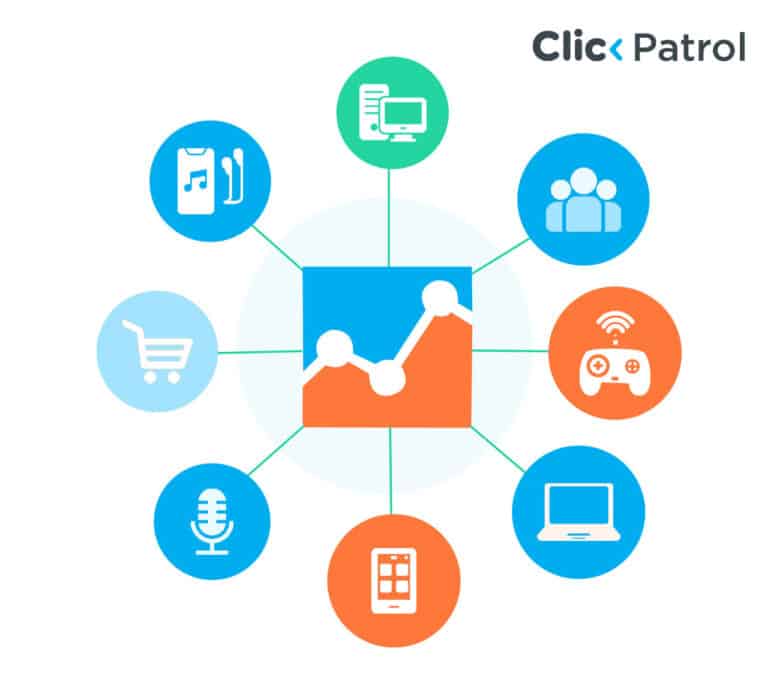
Understanding Fake Form Submissions
Abisola Tanzako | May 08, 2024

Online forms have become required for various entities, including businesses, organizations, and individuals. These forms serve many functions, from collecting valuable customer feedback to generating potential leads for marketing efforts. They are more than just a means to gather information; they also offer services, enable businesses to make informed decisions, enhance service offerings, understand customer preferences, and facilitate effective communication.
Table of Contents
- What are fake form submissions?
- The motivations behind fake form submissions
- Why is it important to prevent fake form submission?
- 1. Assured data integrity:
- 2. Optimized resource utilization:
- 3. Minimized security risks:
- 5. Maximized campaign ROI:
- The impact of fake form submissions
- How to detect fake form submissions
- How to prevent fake form submissions
- Conclusion
- FAQs
Fake form submissions are a significant concern for businesses, as they pose serious security threats and undermine the integrity of online interactions. They can also result in data inaccuracies, negatively affecting business decisions and strategies. This article will provide an understanding of the issues of fake form submissions and the practical ways that can be adopted to prevent their effects.
What are fake form submissions?
Fake form submission, also known as form spam, is a deceptive practice involving the submission of online forms with malicious intent. Both automated bots and human spammers can carry out this. The data they submit often includes false, irrelevant, or inappropriate information and may even contain spam links or scripts.
These entries are usually automated by form bots or manually inputted by malicious individuals to spam the recipient’s database, distort data, or even execute more sinister activities such as phishing. The submissions can take various forms, including:
- False contact details refer to submitting made-up or unlawfully obtained contact information, which can pollute the database and waste resources.
- Spam messages are irrelevant or inappropriate messages sent simultaneously, cluttering the recipient’s inbox and distracting from genuine submissions.
- Malicious code injection is a technique in which harmful code is inserted into form fields, potentially compromising the website’s security.
- Phishing tries to trick users. Sharing important info like passwords or credit card numbers can cause significant security problems.
- Unwanted solicitations are unsolicited communications that advertise products or services, often leading to annoyance and a poor user experience.
- Unintentional Reasons: Fake form submissions can occur unintentionally due to various reasons. For instance, automated bots might fill out forms without human intervention.
The motivations behind fake form submissions
The motivations behind fraudulent form submissions are varied and complex, with individuals submitting deceptive forms for numerous reasons.
1. Political motivations: In some instances, fake form submissions serve as a platform for propagating misinformation or shaping public opinion. This is often done to influence political outcomes or sway societal beliefs.
2. Financial gain: In some scenarios, fake form submissions are part of larger schemes designed for monetary benefits. These deceptive practices can range from fraudulent sales to more complex financial scams.
3. Social engineering: In a broader context, fake form submissions can be part of extensive social engineering campaigns. These campaigns aim to manipulate people’s actions or perceptions, often exploiting human psychology to promote corruption.
4. Sabotage: The submissions could result from unhappy competitors seeking to sabotage and distort data, interfering with business marketing strategies or initiatives.
5. Unauthorized entries: Another motivation is that spammers might employ this tactic to promote their goods or services, while others could be trying to take advantage of promotions or gain unauthorized entry into restricted sections.
6. Distribution of malware: In more harmful scenarios, these fraudulent submissions could be utilized to distribute malware or phishing schemes.
7. Data harvesting: There are instances where individuals or entities resort to submitting fake forms with the primary intention of harvesting data. This data, collected under pretenses, can be used for various purposes, ranging from spamming and identity theft to other fraudulent activities.
8. Free trial abuse: Another common motivation behind fake form submissions is the abuse of free trials. Users may create fake accounts to exploit the benefits offered during free trials without genuine interest in subscribing to the service. This leads to financial losses for businesses and skews user data and metrics.
9. Inflating metrics: Fake form submissions can artificially inflate metrics, creating a false impression of success or popularity. This can mislead stakeholders and decision-makers, leading to inaccurate business strategies and decisions.
10. Breach of security: Fake form submissions could be instigated by hackers trying to breach security systems or by individuals merely interested in causing disorder or trouble.
Why is it important to prevent fake form submission?
The impacts of fake form submission form submissions can range from potential security hazards to frustration. Here are a few reasons why it’s important to prevent fake form submission:
1. Assured data integrity:
Fake submissions can pollute your data with nonsensical or misleading information, leading to skewed results. This can result in poor decision-making regarding marketing strategies, product development, and resource allocation, potentially leading to missed opportunities and decreased customer satisfaction.
2. Optimized resource utilization:
Fake submissions can lead to budget waste and inefficient resource allocation. The time and money spent filtering out fake leads and following up on bogus leads could be better utilized elsewhere, optimizing resource utilization.
3. Minimized security risks:
Fake submissions may pose serious security risks. They may cause financial harm, lead to downtime, and decrease trust in your brand. Some fake submissions might be attempts to plant malware or gain unauthorized access to your systems. It’s important to avoid clicking suspicious links submitted through your forms to minimize these risks.
4. Enhanced team efficiency:
Filtering out fake submissions is a time-consuming and tedious task. It diverts your team’s attention from more productive activities. By preventing these submissions, you free up your team’s energy and focus on tasks that drive actual results, boosting team efficiency.
5. Maximized campaign ROI:
Imagine spending money promoting campaigns based on inflated numbers from fake leads. This wastes precious resources and hinders your return on investment (ROI). Preventing fake form submissions ensures you’re targeting real people interested in your product or service, thereby maximizing the effectiveness of your campaigns and enhancing your campaign ROI.
The impact of fake form submissions
The impacts of fake form submissions are severe and extensive. They can misrepresent data, leading to incorrect decisions that can negatively impact various business areas, such as marketing efforts, product development, and resource management. Here is more on how fake form submissions can impact your campaigns.
1. Distorted data and misguided decisions: False entries contaminate your data, introducing incorrect information that can lead to deceptive conclusions. This could result in the squandering of resources on campaigns aimed at inappropriate audiences or demographics.
2. Budget misuse: There’s a risk of spending funds on promoting campaigns based on exaggerated figures from counterfeit leads. This diminishes your return on investment (ROI) and obstructs your campaign’s effectiveness.
3. Misallocation of resources: The time invested in identifying and eliminating fake submissions detracts from time that could be spent on more valuable tasks. Furthermore, resources like sales calls might need to be directed towards pursuing fraudulent leads.
4. Unsolicited contact and spam: Fake submissions can lead to unwanted solicitations and increased spam, creating a nuisance for users and potentially damaging your brand’s reputation.
5. Tarnished brand image: When false submissions result in irrelevant communications or aggressive marketing strategies, they can tarnish your brand’s reputation and diminish your customers’ trust.
6. Impeded lead generation: Counterfeit submissions can congest your pool of potential leads, making it more challenging to distinguish authentic leads genuinely interested in your product or service.
7. Sales team discontent: Sales teams may waste valuable time pursuing unqualified leads generated by false submissions. This can lead to frustration and negatively affect the team’s overall performance.
8. Campaign targeting complications: False submissions can distort audience targeting data, causing your campaigns to be directed toward the wrong individuals.
9. Security threats: Certain fake submissions could be attempts to embed malware or gain unauthorized access to your systems, posing significant security risks.
10. Legal and financial liabilities: Fake submissions can potentially lead to legal and financial liabilities, especially if they involve fraudulent activities or breaches of data protection regulations.
How to detect fake form submissions
Detecting fake form submissions is crucial for maintaining the integrity of your data. Here are some strategies:
1. Behavioral analysis: Monitor for unusual submission patterns, such as high-speed or repetitive submissions from a specific region or demographic that you don’t typically target. These could be indicative of bot activity.
2. Suspicious submission times: Genuine form completion takes time. Submissions completed unusually quickly could be a sign of automated bots.
3. IP address tracking: Monitor the IP addresses from which submissions are made. A surge of submissions from the same IP address, especially from a high-risk location, could be a red flag.
4. CAPTCHA verification: CAPTCHAs can help distinguish between human and automated bot submissions, adding an extra layer of security.
5. Form validation: Check the format of submitted information, such as email addresses, to ensure it meets the expected patterns.
6. Inconsistent or unrealistic data: Watch out for fields filled with gibberish, unrealistic birthdates (e.g., in the future), generic email addresses like “throwaways,” or phone numbers with repeated digits. These are often signs of fake submissions.
How to prevent fake form submissions
Preventing fake form submissions is a key part of a website’s integrity. Here are some strategies:
- CAPTCHAs: These differentiate between human users and spam bots, helping filter out automated submissions.
- Firewalls: Implementing a firewall can help block suspicious traffic from spam bots, reducing the number of spam submissions.
- Honeypots are traps set to catch spam bots, effectively stopping them from submitting forms.
- Real-time verification tools/technical solutions: These tools can identify and reject spam form submissions at the entry point, preventing them from reaching your database.
- Filtering proxies & VPNs: This strategy can help stop spam form submissions by blocking traffic from known proxies and VPNs.
- IFrame checks: IFrames can be used to detect spam bot form submissions, adding another layer of protection.
- Data analysis: Regularly reviewing submissions for suspicious patterns and using data validation rules can help identify potential spam entries.
- Manual checks on high-risk forms: Conducting manual checks can provide extra security for those particularly vulnerable to spam.
- Two-factor authentication: Implementing two-factor authentication can provide an extra layer of security and effectively deter spam bots.
- User education: Informing users about online security and best practices can help them avoid falling victim to spam and other online threats.
- Form blocking: Once a form has been filled out, blocking it can prevent multiple spam form submissions from the same source.
- Form validation rules: Implementing rules to check the format of submitted information (such as email addresses) can help filter out spam submissions.
Conclusion
Fake form submissions are a substantial challenge to the security and integrity of online platforms. Understanding the root causes of these deceptive activities allows businesses to develop and implement effective countermeasures, reducing their impact. This proactive approach not only safeguards valuable data but also conserves resources and maintains the credibility of online forms.
Implementing the solutions mentioned above ensures that online forms remain a dependable source of authentic data. Staying alert and proactive can secure our online interactions and maintain a safe digital space. It’s important to remember that a comprehensive security system and increased awareness are crucial in fighting fake form submissions and ensuring the security of digital platforms.
FAQs
Q. 1 What if I accidentally submit a fake form?
If you accidentally submit a fake form, it is essential to contact the relevant party immediately. Explain the situation and provide the correct information. Most organizations have protocols for such situations and can guide you through rectifying the error.
Q.2 Are there any legal repercussions for submitting fake forms?
Yes, there are legal consequences for submitting fake forms in certain situations. Providing false information to gain unauthorized access to a system or service might be classified as a cybercrime. Depending on the jurisdiction and the severity of the offense, this could lead to legal action.
Q.3 How can I stay updated on the latest methods for fake form submissions?
You can stay up-to-date on the newest ways people fake form submissions by reading cybersecurity blogs and forums. These platforms often provide insights into the new strategies employed by fraudsters. Additionally, many security vendors provide regular updates on the latest threats and vulnerabilities.

